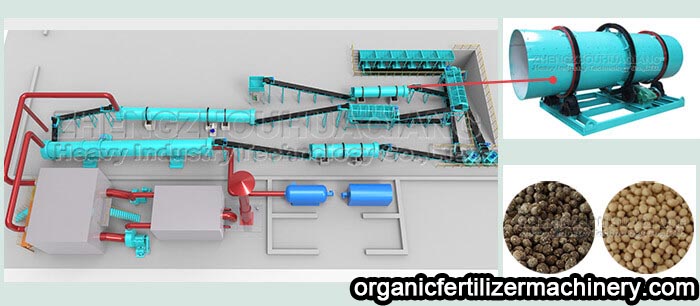The fermentation process of treating agricultural waste into organic fertilizer
The organic fertilizer machine for processing agricultural waste into organic fertilizer is a type of organic fertilizer that uses animal manure, urban household waste, crop straw, agricultural by-products, and organic waste generated from food processing as raw materials, combined with multifunctional fermentation bacterial agents to quickly deodorize, decompose, and dehydrate, and then processed by stirring and organic fertilizer granulator.
The fermentation process of agricultural waste treatment into organic fertilizer production equipment is divided into: composting, heating, flipping, odorless, loose, and composting. When composting, 80% of animal manure and 20% of straw are crushed and mixed. The ratio of straw to feces can be determined based on the moisture content of the feces. Generally, fermentation requires a moisture content of 65%, which means kneading it into a ball with your hands, seeing water between your fingers, but not dripping, and releasing it to dissolve. Then add corn flour or rice bran and bacterial strains. The function of corn flour is to increase sugar content for bacterial fermentation, allowing multi-dimensional complex enzyme bacteria to quickly gain an advantage. Add the prepared mixture to the mixer for stirring, stirring evenly and thoroughly without leaving any lumps.
The machine for treating agricultural waste into organic fertilizer is divided into two stages: fermentation and granulation:
1. Pre fermentation section: Organic fertilizer fermentation equipment, high humidity material crusher, drum screening machine.
2. Post granulation section: mixing mixer, organic fertilizer granulator, disc granulator, wet stirring toothed granulator, organic fertilizer dryer, rotary cooling machine, drum screening machine, rotary coating machine, automatic weighing and packaging machine, intermediate belt conveyor connection.
.jpg)
.jpg)




.jpg)

